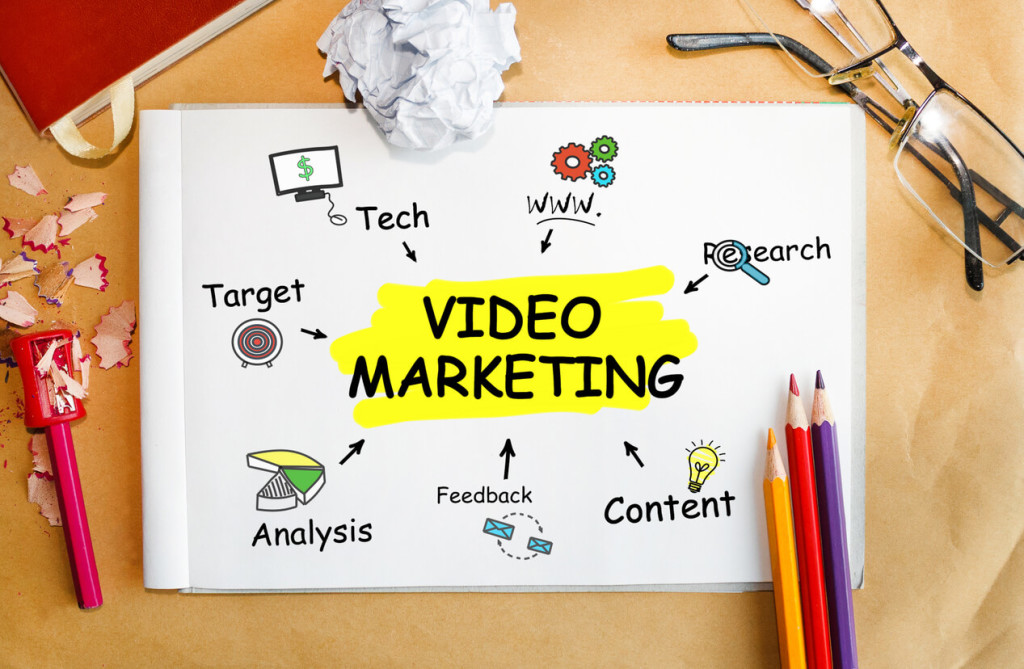How to Create an Effective Video Content Strategy for Your Brand
Video content remains one of the most effective ways for brands to engage audiences, and in 2025, its role has only grown. Short-form videos on platforms like TikTok, Instagram Reels, and YouTube Shorts dominate viewer attention, while interactive and shoppable content allows brands to turn engagement into measurable actions. AI tools now make it possible to personalize video experiences at scale, tailoring messaging to individual viewers and boosting both retention and conversions.
Creating a professional video content strategy today means thinking beyond social platforms. For example, using a professional video hosting solution like Dacast allows brands to own their content, monetize it, and analyze performance across multiple channels—providing insights and control that social platforms alone cannot offer. Whether you are planning live streaming for marketing events, a VOD marketing strategy, or interactive campaigns, having a structured approach ensures your videos deliver consistent value and measurable results.
In this guide, we’ll walk through how to create a video content strategy, including step-by-step planning, AI-driven personalization, interactive engagement strategies, and tips for distributing and measuring your brand videos effectively in 2025.
Table of Contents
- What is Video Marketing and How to Build a Video Content Strategy
- What is a Video Content Strategy?
- Why is Video Content so Important?
- How to Create a Video Content Strategy
- Measure, Optimize, Repeat
- FAQs
- Conclusion
What is Video Marketing and How to Build a Video Content Strategy
What is Video Marketing?

Content marketing remains one of the most effective ways to reach audiences, as people increasingly prefer consuming information online. Video marketing falls under this umbrella but offers a more immersive and engaging experience.
In 2025, video marketing is not just about posting videos online—it involves multi-platform distribution, AI-driven personalization, interactive elements, and even shoppable video experiences. Brands can now tailor content for social platforms, email campaigns, websites, and OTT apps, while AI tools help optimize messaging and engagement for each viewer.
Video marketing allows you to share relevant, valuable information about your products or services while capturing attention in ways that static content cannot.
What is a Video Content Strategy?
A video content strategy is a plan that defines the types of videos you need to create to reach your audience and achieve your marketing goals. In 2025, an effective strategy also includes which platforms you will distribute your content on, how AI tools will guide personalization, and how interactive or shoppable elements can drive engagement and revenue.
Your video content strategy is part of your overall marketing plan. It outlines what videos to create, the topics to cover, the formats to use, and the distribution channels to leverage. Consistently producing high-quality content that follows a solid strategy helps increase views and engagement. When combined with clear calls to action, this approach drives conversions and builds measurable results.
Example Workflow Using Dacast:
- Hosting: Upload and organize videos on a professional video hosting platform like Dacast to maintain ownership and branding.
- Distribution: Share videos across multiple channels—your website, email campaigns, social platforms, and OTT apps—while keeping full control over access.
- Interactivity & Monetization: Add interactive features, shoppable links, or gated content directly within your videos to boost engagement and revenue.
- Analytics: Use Dacast’s analytics to track performance, monitor KPIs such as watch time, retention, and conversions, and refine future video content strategy.
A video content strategy is a plan that you create that determines what sort of videos you need to create in order to connect with your target audience and reach your goals.
Your video content strategy is one part of your marketing strategy. It breaks down which videos you will create, and it outlines what type of videos you will create and what topics you will cover.
Consistently creating high-quality content that follows a solid video marketing strategy helps you to increase your video views. Increased views with the proper calls to action will result in greater conversions.
Why is Video Content so Important?

Global video consumption continues to surge. By 2025, viewers are expected to watch over 2.5 billion hours of video daily, with mobile streaming accounting for more than 70% of all video watch time. Live streaming engagement is also growing, often generating 30–50% higher interaction rates compared with on-demand video, making it a key tool for brands that want real-time connection with their audience.
As a result, businesses across industries are increasingly integrating video into their marketing strategies. Using a professional video hosting platform like Dacast provides brands with full content control, data privacy, and the ability to manage who accesses videos—an emerging necessity in a world of increasing privacy regulations.
Benefits of video marketing for businesses include:
- Making your brand more personal and relatable
- Engaging audiences who prefer video over text-based content
- Giving you control over messaging and brand presentation
- Combining audio and visuals for a more well-rounded experience
- Easily embedding videos in emails, blogs, and social posts
- Boosting SEO with keyword-rich titles and descriptions
Video also supports repurposing: content broadcast on your website can be used for social media snippets, paid ads, or gated lead magnets. This is particularly effective for B2B webinars, e-commerce product demos, and online course content.
Even if your strategy isn’t entirely video-focused, diversifying with video allows you to reach a broader audience and drive more leads. Private hosting solutions, such as Dacast, ensure you retain ownership and compliance while measuring performance across multiple platforms.
Now that you understand the importance of video content and its potential, the next step is to plan your goals, create a narrative, and map out topics before moving into production and distribution.
How to Create a Video Content Strategy
Now that you understand the value of creating a video content strategy and all of its moving parts, it is time to create a video content strategy of your own.
You’ll start with planning your goals, creating a narrative and planning topics before you move into creating and distributing your content.
Let’s talk a little bit more about what these steps will look like for you.
1. Identify Your Goals

Identifying your goals right out of the gate is the perfect way to set yourself up for success.
Ask yourself these questions:
- What do we hope to accomplish?
- What sort of conversions are we looking for?
- Who are we creating content for?
- What type of information does our target audience want/need?
2025 KPI examples to track success:
- Average watch time per video
- Conversion rates from CTAs within videos
- Cost per lead generated from video campaigns
- Engagement rate (likes, shares, comments, clicks)
- Retention and drop-off points for VOD or live streams
Set your goals around these KPIs to ensure measurable outcomes.
2. Create the Narrative

To connect authentically, consider brand storytelling trends:
- User-generated content (UGC) integration
- Authentic storytelling over polished corporate messaging
- Micro-storytelling for short-form videos like TikTok, Reels, and Shorts
Your narrative should guide viewers through a problem they have and a solution your brand provides. Use empathy and credibility to keep your audience engaged while reinforcing your brand message.
3. Outline Topics

Generate a list of topics that provide real value. Your topics should be relevant to your audience’s needs, pain points, and interests.
2025 updates for topic planning:
- AI-assisted topic generation tools for trend analysis
- Keyword research combined with social trend analysis
- Incorporating seasonal, interactive, or shoppable content ideas
Example types of video topics:
- How-to tutorials related to your products or services
- Product or service demos
- Team expertise or thought leadership
- Customer testimonials
- Expert interviews
4. Determine the Angle and Creative Aspects

Decide how you will present your content uniquely. You can differentiate your videos even on well-covered topics by offering added value.
2025 creative trends:
- Interactive polls and clickable CTAs within videos
- AI-generated captions and real-time translations
- Vertical and mobile-first framing for short-form and mobile audiences
- Micro-interactions and shoppable links for e-commerce integration
Experiment with video styles, animation, live vs. VOD, and interactive overlays to see what resonates with your audience.
5. Plan Your Video Type and Distribution

Distribution determines which type of video you should create and how it reaches your audience.
Multi-channel 2025 approach:
- Live streaming for webinars, product launches, or community engagement
- VOD for tutorials, courses, and evergreen content
- OTT apps for subscription-based access
- Email embeds, landing pages, and gated content for lead generation
- Social media short-form for awareness and virality
Comparison: Public vs. Private Hosting
| Feature | Public Platforms (YouTube, TikTok) | Private Hosting (Dacast) |
|---|---|---|
| Ownership | Limited | Full control |
| Monetization | Platform dependent | Direct monetization options (subscriptions, pay-per-view) |
| Branding | Restricted | Fully customizable player and landing pages |
| Analytics | Basic | Detailed KPIs, heatmaps, retention tracking |
| Interactivity | Limited | Chat tools, polls, CTAs, gated content |
| Data Privacy | Public | GDPR/CCPA compliant, private access |
| Multi-Platform Distribution | Partial | Full control across website, OTT, email |
Using a professional hosting platform like Dacast ensures you retain ownership, can monetize content, integrate gated access, and collect actionable analytics.
6. Create the Content

Once planning is complete, produce your videos.
2025 production tips:
- Use professional cameras and audio; consider 4K/8K resolution for future-proofing
- Mobile-first framing for short-form or vertical content
- Remote collaboration tools for distributed teams
- Sustainable production practices to reduce resource use
- Incorporate interactivity: overlays, polls, shoppable CTAs
- Test AI tools for captions, auto-translation, and editing assistance
If live streaming, ensure you have proper encoding equipment and a stable streaming setup. For VOD, prioritize polished post-production with analytics-enabled hosting. Above all, authenticity matters—be yourself on camera to connect genuinely with your audience.
Measure, Optimize, Repeat
Creating and distributing your video content is only the first part of a successful video content strategy. To maximize ROI and refine your brand video strategy, you need to measure performance, optimize based on insights, and repeat the process consistently.
Key KPIs to Track
In 2025, tracking the right metrics is essential for a data-driven video marketing strategy for brands. Focus on:
- Click-through rate (CTR): Understand how many viewers take action from your video CTAs.
- Engagement percentage: Measure how actively viewers interact with your content, including likes, shares, comments, and poll participation.
- Completion rate: See how many viewers watch your video from start to finish, critical for both short-form and long-form content.
- Revenue per viewer: Track monetization from shoppable video links, subscriptions, or pay-per-view.
By monitoring these KPIs, you can evaluate which videos resonate most and inform your effective video content plan.
How Dacast Analytics Helps
Professional video hosting platforms like Dacast provide advanced analytics tools that go beyond public platform metrics. With Dacast video hosting for businesses, you can:
- Track audience behavior across live streaming for marketing campaigns, VOD marketing strategy, and OTT content.
- Monitor viewer retention, click patterns, and engagement for each video.
- Analyze multi-platform video distribution, comparing traffic from email embeds, social media, and gated landing pages.
- Use insights to optimize your video content strategy 2025, including interactive video engagement strategies and shoppable video marketing examples.
For example, one Dacast client improved conversions by 32% after embedding interactive CTAs in their hosted videos and monitoring engagement trends through Dacast analytics.
A/B Testing for Optimization
Testing different video elements allows you to fine-tune your brand storytelling with video and overall video distribution strategy. Consider:
- Thumbnails: Experiment with different designs, text overlays, or color schemes to improve CTR.
- Calls-to-action: Test placement, copy, and interactive buttons to see which drives the highest conversions.
- Video length: Compare short-form vertical videos versus longer VOD content to optimize watch time and completion rate.
Using these insights, you can continuously refine your vlog content strategy, live streaming for marketing, and private video hosting for brands. A/B testing ensures that every piece of content you produce performs better than the last, driving measurable results for your business.
Continuous Improvement
The key to a high-performing video content marketing strategy 2025 is iteration. Measure KPIs, analyze audience behavior with tools like Dacast analytics, optimize your content and distribution, and then repeat. This cycle allows you to:
- Improve viewer engagement and retention
- Maximize revenue from interactive or shoppable content
- Refine multi-platform video distribution tips for future campaigns
- Ensure your video marketing strategy for brands stays competitive in 2025
By embedding this measurement and optimization process into your workflow, your brand video strategy becomes data-driven, scalable, and more effective at reaching your target audience.
FAQs
1. What is a video content strategy?
A video content strategy is a plan that outlines the types of videos you will create, the topics you will cover, and the goals you aim to achieve. It ensures your content resonates with your target audience while supporting broader marketing objectives. A strong strategy also guides distribution, engagement, and measurement efforts to maximize impact.
2. Why is video marketing important in 2025?
Video marketing continues to dominate because it drives engagement, builds brand awareness, and supports conversions more effectively than static content. In 2025, trends like short-form videos, interactive content, and shoppable video make it easier to connect with audiences across multiple platforms. It also allows brands to combine storytelling, personalization, and measurable results in one format.
3. What platforms should I use for video distribution?
The choice of platforms depends on your goals and audience. Public platforms like YouTube, TikTok, and Instagram Reels can help you reach broad audiences, while private video hosting platforms like Dacast allow you to control branding, analytics, and monetization. A multi-platform approach—combining live streaming, VOD, OTT apps, and email embeds—often yields the best results.
4. How can I measure ROI from video content?
ROI can be measured using key performance indicators (KPIs) such as watch time, completion rates, click-through rates, conversion rates, and revenue per viewer. Tools like Dacast analytics provide insight into audience behavior, engagement trends, and content performance. A/B testing different thumbnails, CTAs, and video lengths can further optimize results.
5. What’s the difference between public and private video hosting?
Public hosting platforms, such as YouTube, provide easy access to a large audience but offer limited control over branding, monetization, and data. Private hosting platforms like Dacast give full control over the video player, analytics, subscription models, and content distribution. This makes private hosting ideal for businesses looking to monetize content, protect IP, and deliver a professional brand experience.
6. How can I use AI to plan my video content strategy?
AI tools can assist in generating video topics, analyzing trends, optimizing scripts, and even personalizing content for different audience segments. For example, AI can help identify high-performing keywords, suggest interactive elements, and automate captioning or translation for global audiences. Integrating AI streamlines strategy planning and enhances engagement.
7. How do I ensure my videos are accessible and compliant (captions, GDPR)?
To make videos accessible, use closed captions, provide transcripts, and ensure color contrast and font readability meet accessibility standards. Compliance with regulations like GDPR involves securing user data, managing consent, and using platforms that support privacy controls. Tools like Dacast help streamline these processes for live and on-demand content.
Conclusion

Now that you have a better understanding of the purpose and process behind creating a video marketing strategy, you are ready to make one of your own.
From goal-setting to content creation, keeping your audience at the forefront is essential. Your entire video content strategy should be designed to connect with them and drive measurable results.
With the right streaming solution, you can execute your strategy, host and distribute your branded video content, and turn viewers into loyal customers. Using professional video hosting like Dacast, you can analyze performance, monetize your videos, and control your content across multiple platforms.
Ready to launch your video marketing campaign? Start with a free trial of Dacast to host, distribute, and monetize your video content. For guidance, check out our video monetization strategies, live streaming setup guide, and OTT hosting solutions to make the most of your branded videos.
 Stream
Stream Connect
Connect Manage
Manage Measure
Measure Events
Events Business
Business Organizations
Organizations Entertainment and Media
Entertainment and Media API
API Tools
Tools Learning Center
Learning Center Support
Support Support Articles
Support Articles